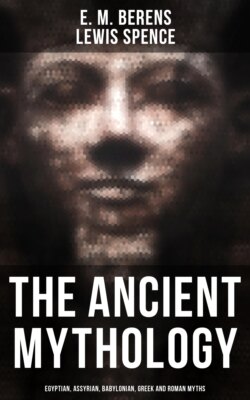Читать книгу The Ancient Mythology: Egyptian, Assyrian, Babylonian, Greek and Roman Myths - Lewis Spence - Страница 71
На сайте Литреса книга снята с продажи.
Nannar
ОглавлениеNannar was the moon-god of Ur, the city whence came Abram, and with that place he was connected much as was Shamash with Sippar—that is to say, Ur was his chief but not his only centre of adoration. Why he came to have his principal seat at Ur it would be difficult to say. The name Ur signifies 'light,' so it may be that a shrine dedicated to Nannar existed upon the site of this city and constituted its nucleus. In Babylonian mythology the sun was regarded as the offspring of the moon, and it is easy to see how this conception arose in the minds of a race prone to astronomical study. In all civilizations the lunar method of computing time precedes the solar. The phases of the moon are regarded as more trustworthy and more easily followed than the more obscure changes of the brighter luminary, therefore a greater degree of importance was attached to the moon in very early times than to the sun. The moon is usually represented on Babylonian cylinders as bearing a crescent upon his head and wearing a long, flowing beard described as of the colour of lapis-lazuli—much the same shade as his beams possess in warmer latitudes. Nannar was frequently alluded to as 'the heifer of Anu,' because of the horn which the moon displays at a certain phase. Many monarchs appear to have delighted in the upkeep and restoration of his temple, among them Nur-Ramman and Sin-iddina.
